Best mirrorless cameras in 2022
All-time mirrorless cameras in 2021
Included in this guide:
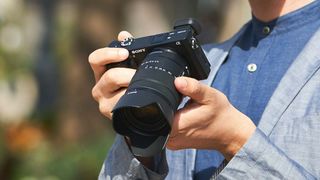
Looking to purchase i of the best mirrorless cameras? Then you've got some tough choices ahead of you, because there have never been so many keen options.
With camera makers increasingly turning away from DSLRs and towards mirrorless, there are more than swell cameras to cull from than ever before. Which one you become for volition depend on many factors, non to the lowest degree price — the cheapest models in our list cost less than $600, the nearly expensive around $2000 (and yous could even spend a lot more than that).
You should also consider whether y'all want full-frame, APSC or Micro Four-Thirds sensor and which lens system you want to buy into. There'south more info on those options below. But whichever camera you go for, you're sure to be happy, because every model in our all-time mirrorless cameras list comes highly recommended.
- How to use your camera as a webcam
- Which is best for you? DSLR vs. mirrorless cameras
What are the all-time mirrorless cameras?
After testing dozens of models, we recollect the best mirrorless camera for most consumers is the Sony Alpha a6100. This camera costs around $850 with a lens, takes not bad photos in low low-cal, has a fast autofocus system, and can record video in 4K. The a6100 has a similar design to other cameras in Sony's mirrorless photographic camera lineup, which means a meaty design that's easy to hold, a nice large touchscreen, and an electronic viewfinder.
If you lot're but breaking into photography, the all-time mirrorless camera for beginners is the Sony a6000. The original camera in the lineup, the a6000 costs less than $600 with a lens, all the same shoots at a fast 11 fps, and takes great pictures in all weather. This camera lacks a touchscreen, and it can only shoot video upwardly to 1080p, but these are fine compromises at this price.
Having trouble deciding which Sony mirrorless camera is right for yous? Bank check out our best Sony mirrorless cameras page.
Canon, Fujifilm, Nikon, Olympus, Panasonic, and Sony have all released software that allows you to use certain of their cameras every bit webcams. For more information, including compatible cameras, bank check out our guide on how to use your photographic camera as a webcam.
The best mirrorless cameras you can buy today

We think most consumers will detect the Sony a6100 to exist the all-time mirrorless camera for their needs. Selling for around $700 with a kit lens, it's not overly expensive, but has many of the modernistic features you'll want, including an splendid autofocus system, a fast 11fps shooting speed, a vivid electronic viewfinder, and sharp 4K video. (The camera even has a microphone jack for improve sound.) Plus, the a6100 has an excellent design with a skilful paw grip, likewise equally an articulating 3-inch touchscreen, which makes it easy to hold the photographic camera higher up or beneath eye level and still get the shot y'all want.
What you don't go at this cost are features such equally in-body prototype stabilization, and the A6100's viewfinder is a lower resolution than higher-end models. But these tradeoffs are more than acceptable.
Read our total Sony a6100 review.
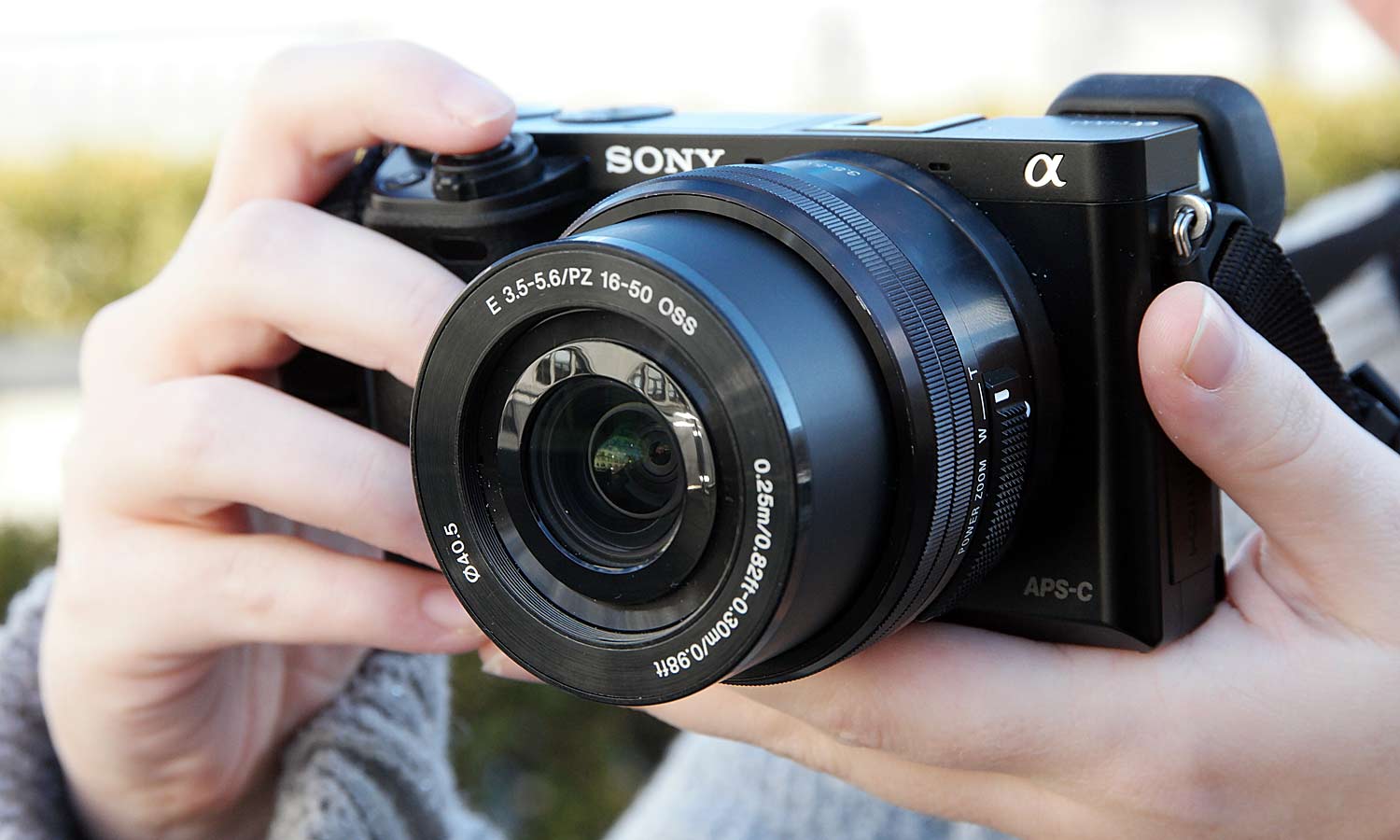
The Sony a6000 is the best mirrorless camera for beginners, in that it'southward an platonic compromise betwixt power and portability. Its autofocus is as expert as a DSLRs, and it shoots at a blistering 11 frames per second with continuous autofocus and metering. Electronic viewfinders are a weak point on many mirrorless models, just the a6000's OLED eyepiece is bright and crystal-clear, and doesn't endure from the stuttering you lot'll sometimes discover on EVFs with lower refresh rates. A DSLR shooter would be comfortable moving over to this eyepiece.
The a6000 shines in low calorie-free, and features the power to capture clean images upwards to ISO 1600 sensitivity and usable shots in very dim conditions mode up to ISO 12,800. On tiptop of that, the a6000 shoots gorgeous total-HD video at upward to 60 fps, as well as 24 fps for a movie theater look. Clips show fine detail, rich colour and buttery-smooth motion rendering, even in low calorie-free.
Read our full Sony a6000 review .

It'due south the world'south first full-frame mirrorless camera to carry in-body 5-centrality image stabilization, but there's more to the Sony a7 II than just steady shooting. This petite, sexy camera fits in most bags, and packs a bunch of customizable buttons and knobs for quick admission to your favorite controls. We also loved the brilliant, clear pictures and relatively depression corporeality of dissonance (graininess) even at high ISO light sensitivity levels. Thanks to effective wireless adequacy, you'll be able to axle your shots to your smartphone or computer within seconds.
The Sony a7 Two is a few years old at this point — it'due south been succeeded by the Sony a7 III, which offers full frame HDR 4K video and amend battery life, to proper noun a few things. Only the a7 II is still a powerful camera, and it's a lot cheaper than the new model, making it a better deal.
Read our full Sony A7 II review .
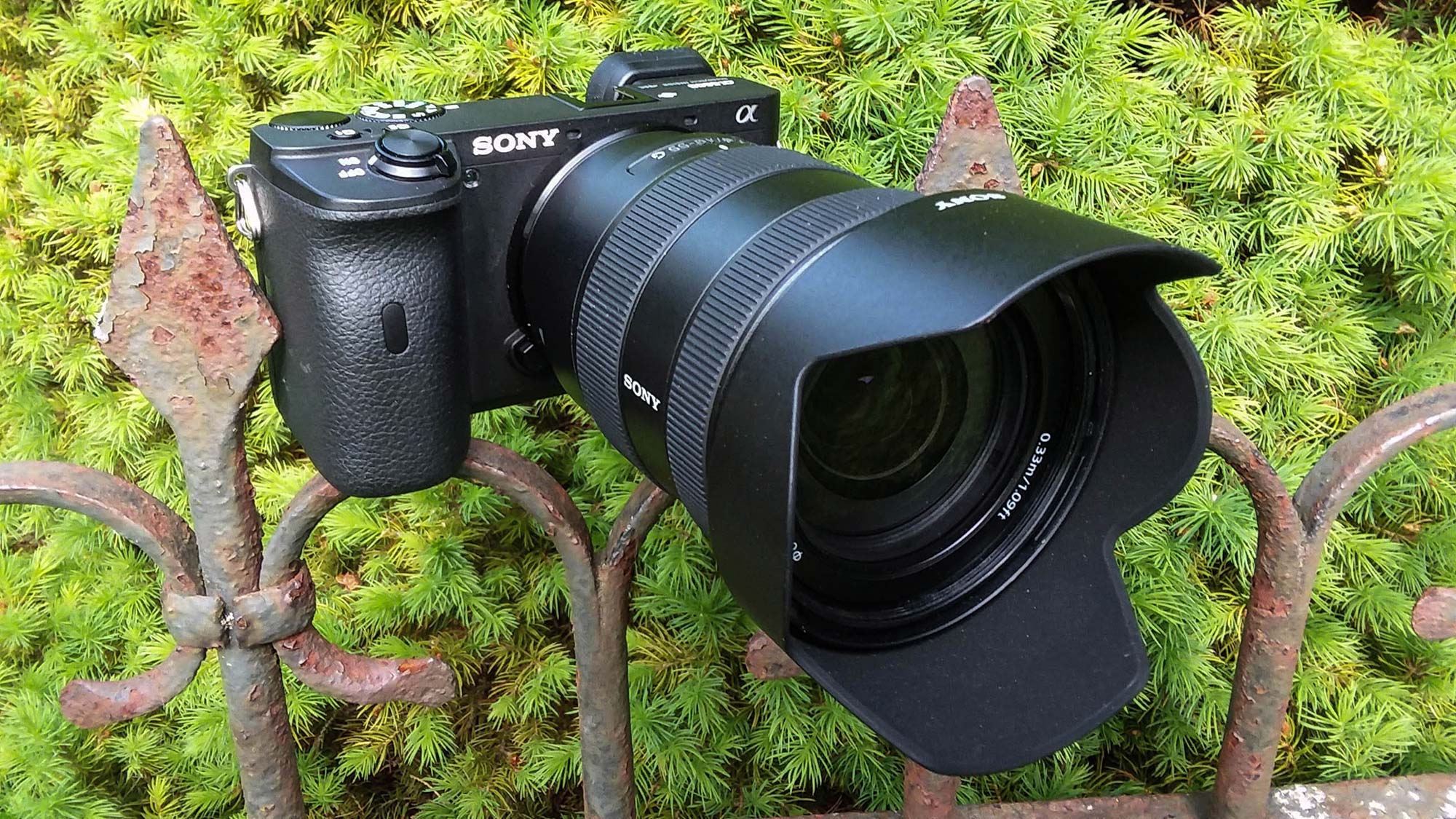
The Sony Blastoff a6600 is the successor to the older, only notwithstanding great a6500, and brings with it such features equally 5-axis in-body image stabilization, 4K video recording at 60 frames per second, and a meaty but sturdy magnesium-blend body that'south protected against dust and mist.
The a6600 has the same 24.ii-MP sensor as its predecessor, but now, with a faster processor, it has a wider ISO range (100-32,000), and AI-enabled eye autofocusing in both however and video. And, the a6600's rated battery life of 720 shots is double that of the a6500; while we still recommend you pick upwards a spare battery, it's expert to know the a6600's volition hold out for a lot longer.
Read our full Sony Blastoff a6600 review .
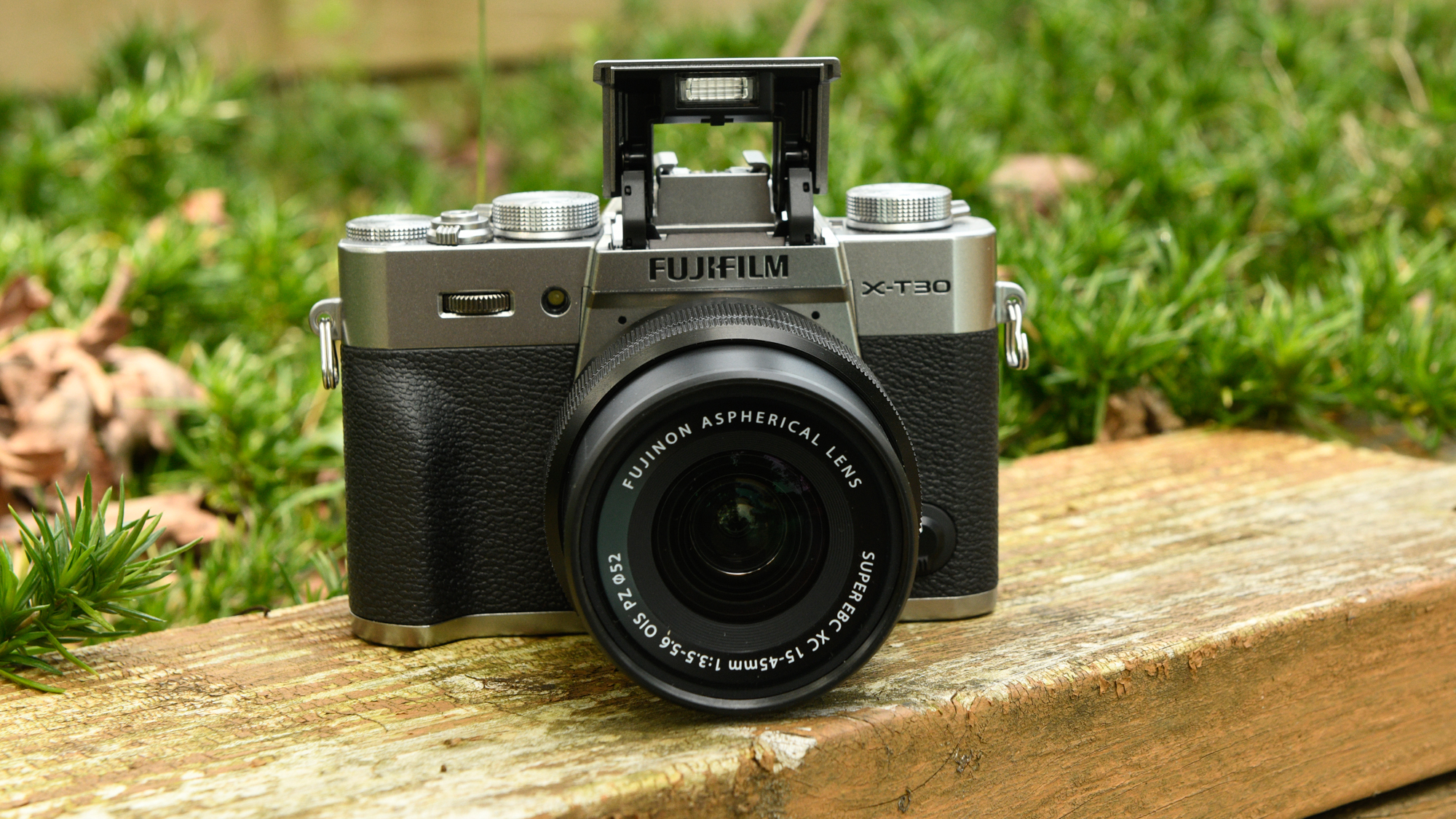
The Fujifilm Ten-T30 makes information technology on the list of the best mirrorless cameras because it has many of the features as the more expensive X-T3, but costs less than $1,000. It'southward got a great retro wait with a ton of dials, but notwithstanding has modern touches, such every bit its articulating touchscreen.
The X-T30 takes fantastic pictures in a broad variety of lighting settings, and at that place are an abundance of settings and creative filters to get more out of your photos. Information technology has a fast processor that allows yous to have DCI 4K video at xxx fps. However, you're limited to 10-minute clips, and then those who program to shoot video should cheque out the Sony a6600 instead.
Read our full Fujifilm Ten-T30 review .
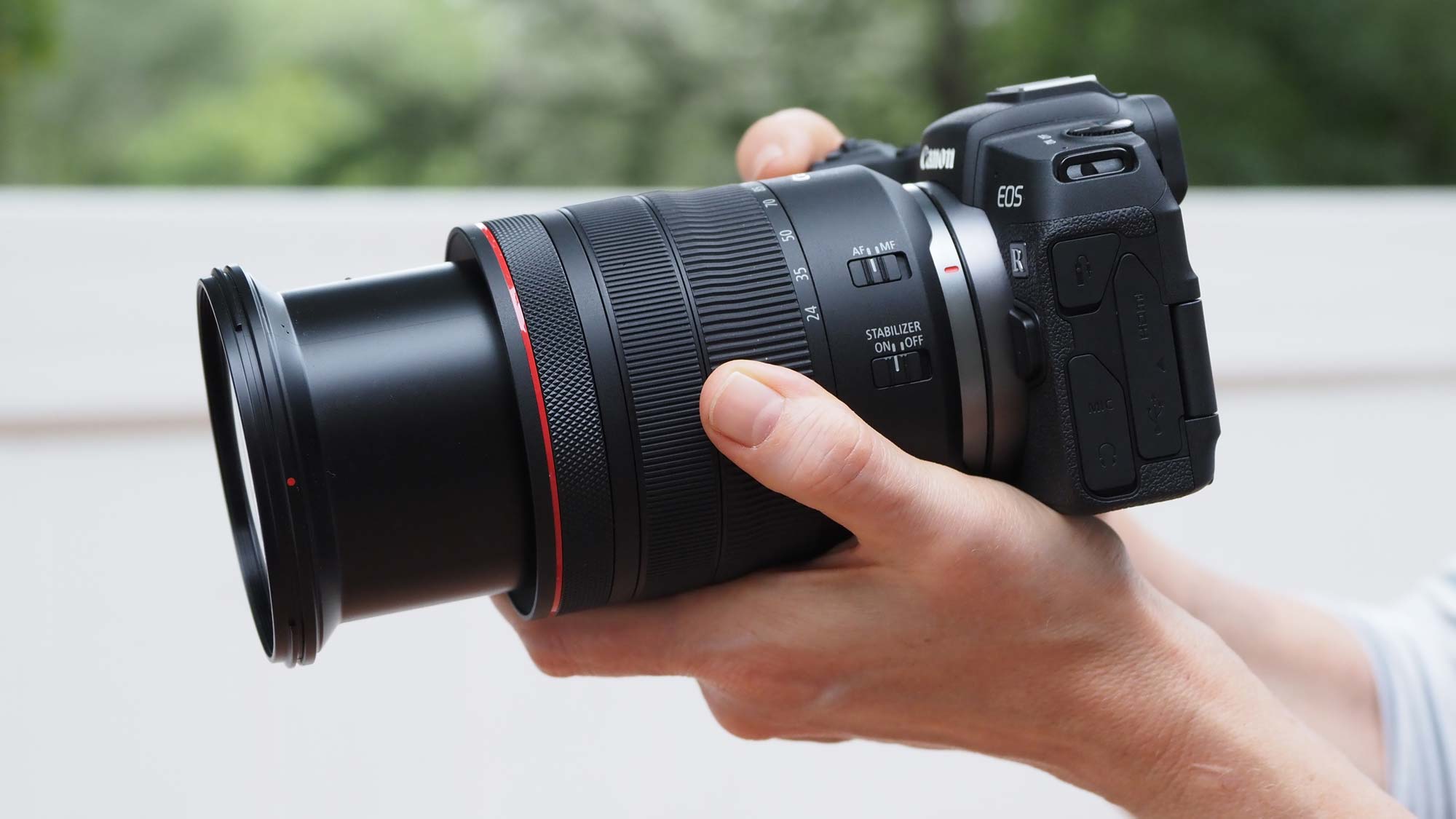
Until recently, well-nigh full-frame mirrorless cameras cost at to the lowest degree $2,000 just for the camera torso. The Canon EOS RP is part of a trend of less-expensive models, bringing higher image quality at a lower cost. The EOS RP has a 26 megapixel sensor, user-friendly controls, a fully articulated touch screen, and a compact body, all for less than $one,000. Non surprisingly for Canon, the EOS RP also takes cracking pictures, and can shoot video at resolutions upward to 4K.
Even so, at that place are some compromises: The EOS RP lacks in-trunk image stabilization, it has a comparatively short battery life, and a slower shooting speed than other mirrorless cameras. Also, because Canon is relatively new to mirrorless cameras, in that location are fewer lenses available when compared to models from Sony.
Read our full Canon EOS RP review .
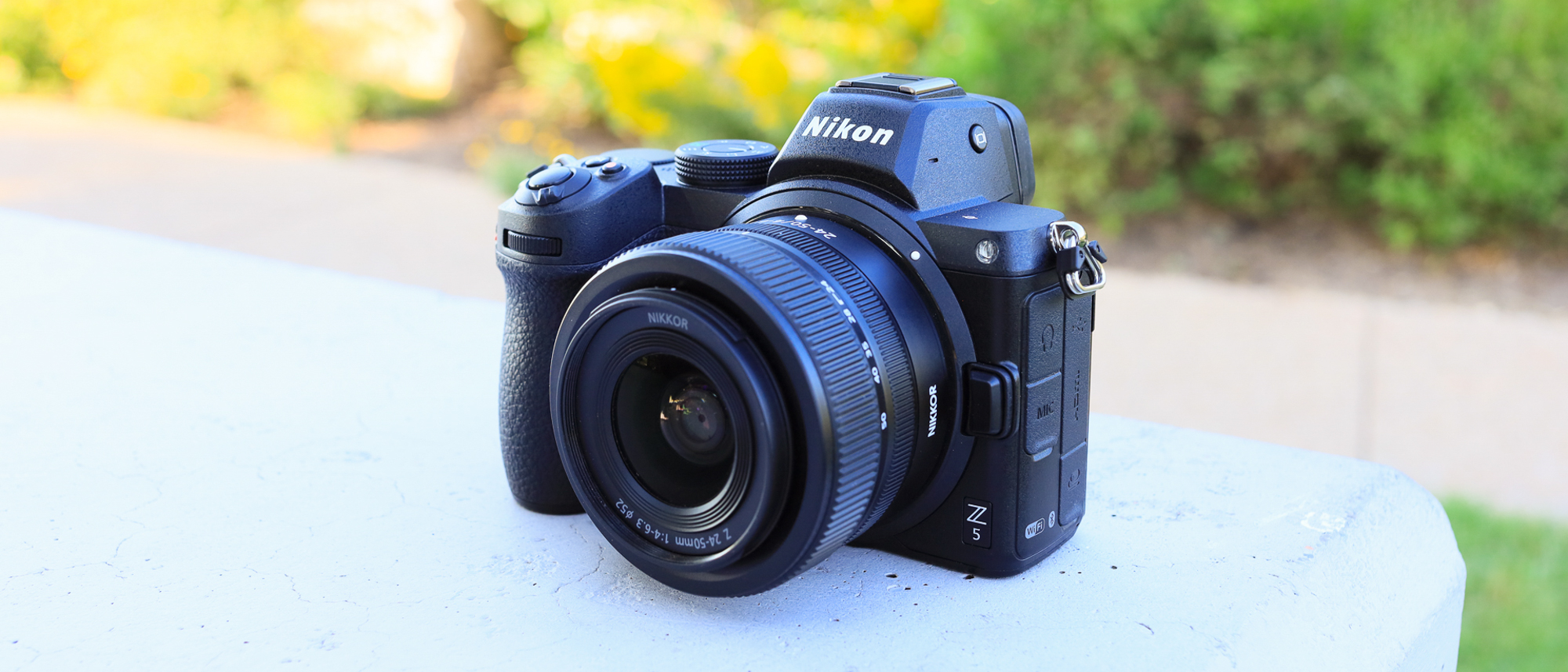
The Nikon Z5 is an excellent midrange mirrorless camera with a total-frame sensor, letting you go large and luscious images. Though larger than the Canon EOS RP, we liked the way it handled, allowing us to keep a firm grip. Information technology'due south conditions-sealed against the elements, too.
The Z5 took excellent pictures in low light, thanks to in-body image stabilization and an ISO range upwards to 51200. It tin can shoot 4K Ultra Hard disk/30p video, but the paradigm is cropped, but the photographic camera has a mic and a headphone jack. Concluding, the 3.2-inch touchscreen is large and brilliant, but but tilts up and downwardly, and not to the side. Overall, though, this is a great selection for those who don't want to spend more than $1,500 on a full-frame mirrorless camera.
Read our total Nikon Z5 review .

The Sony A7C is the smallest and lightest lens-swapping full-frame photographic camera, making information technology a groovy alternative to a hefty full-frame DSLR — or fifty-fifty a larger mirrorless option such as the Sony A7 II or Nikon Z5 in this list. That size does come up with a few drawbacks, mainly effectually the absence of certain controls y'all might expect on a nigh $2000 photographic camera, but it does take a born viewfinder and nosotros still institute it to handle well in daily use. In that location's certainly no doubts effectually its epitome quality: it shoots stellar 24MP stills and 4K video, though the latter is limited to 30 fps. Buy information technology in a kit with the similarly diminutive 28-60mm lens and you take a neat pick for traveling lite.
Read our full Sony A7C review
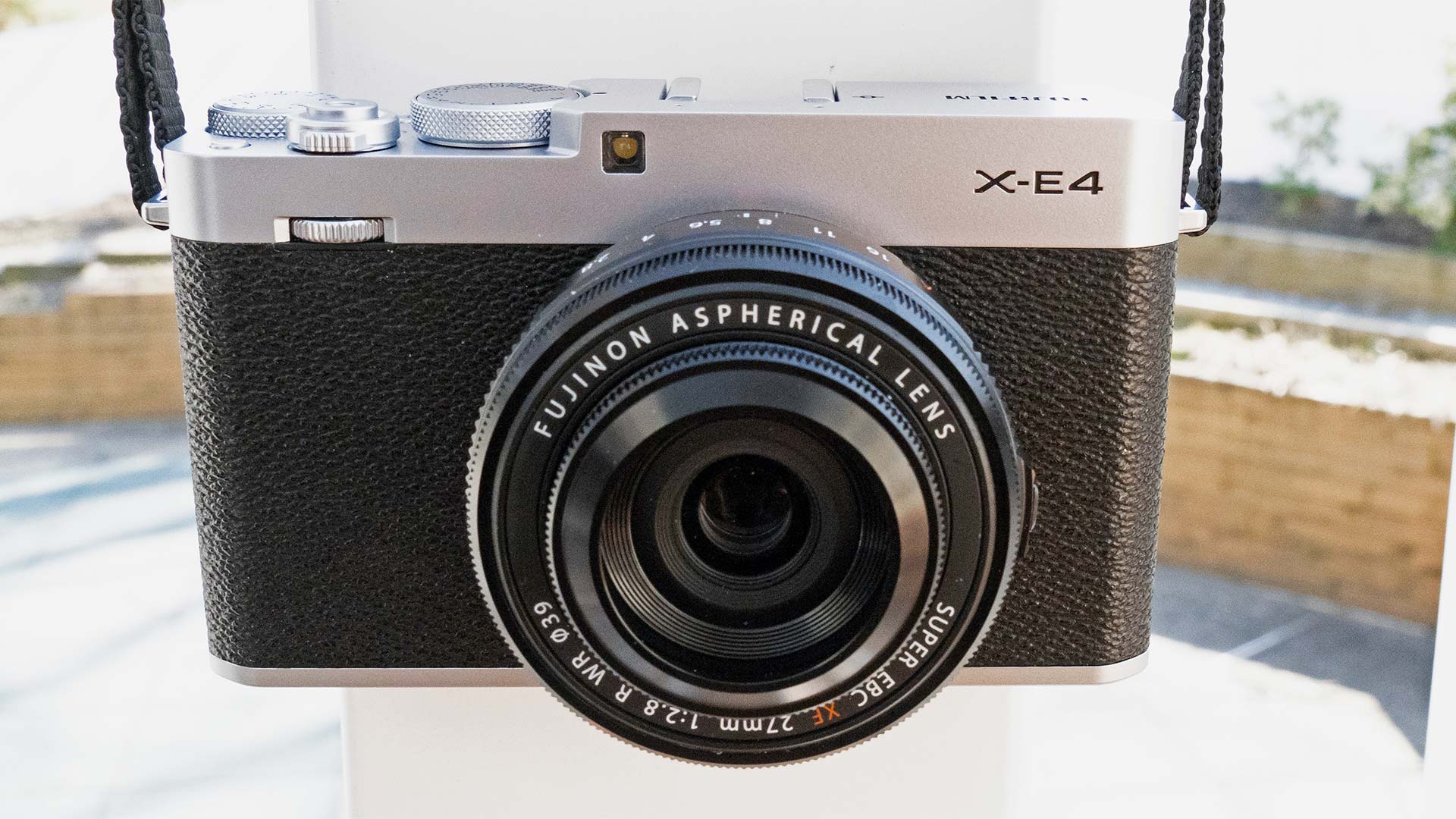
If street photography is your thing, then the Fujifilm X-E4 could exist but what yous're after. The latest entry in Fuji's excellent X series of mirrorless cameras packs a lot into a minor, rangefinder-style retro body, including a 3-inch impact-screen LCD that flips out past 180-degrees, a bright EVF and 4K video. Simply information technology'southward the 26-megapixel stills that really shine here, digging up masses of detail and handling exposure and dynamic range well. Racket is too well controlled, while Fuji's superb film simulations ensure that every shot looks just like you lot want it to.
The relative lack of manual controls won't be to everyone's taste, and at that place'due south no built-in epitome stabilization, but the price is reasonable for the feature set and Fuji'southward e'er-growing lens range offers something for every situation and budget.
Read our full Fujifilm X-E4 review.
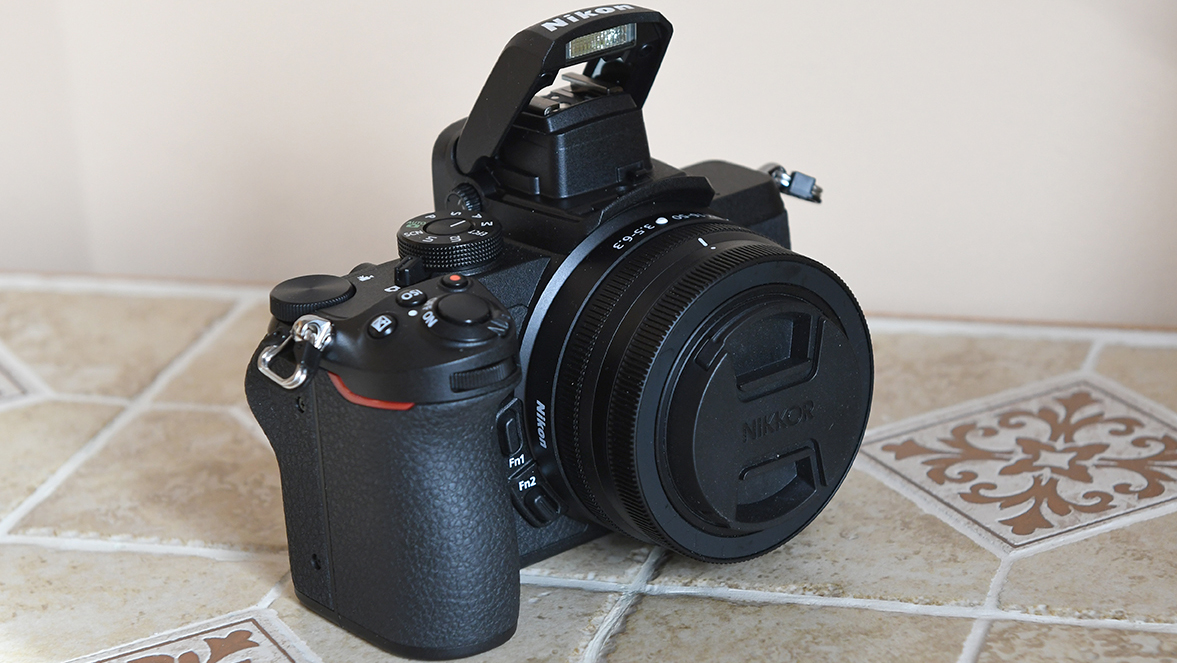
Nikon was a bit belatedly to the mirrorless camera category, just it's making up for lost time. Post-obit the launch of the full-frame Z6 and Z7 mirrorless cameras, Nikon introduced the Z 50, which doesn't have a full-frame sensor, but offers a solid feature set, bully epitome quality and good performance — in a smaller form factor at a more consumer-friendly price.
The Nikon Z fifty is a great mirrorless camera for Nikon enthusiasts; we liked its build and deep, comfy grip, likewise as its sharp electronic viewfinder. Its 3.two-inch touchscreen flips down for selfies, but is obscured if you have the camera on a tripod. The Z 50 has intuitive controls, in-photographic camera retouching, and good performance in low low-cal. However, in that location'due south no in-body image stabilization, and the single carte du jour slot only supports lower-end SD cards.
Likewise wait out soon for our review of the Nikon Z fc — a new mirrorless camera that has the same specs as the Z 50 but in an attractive retro body.
Read our full Nikon Z fifty review .
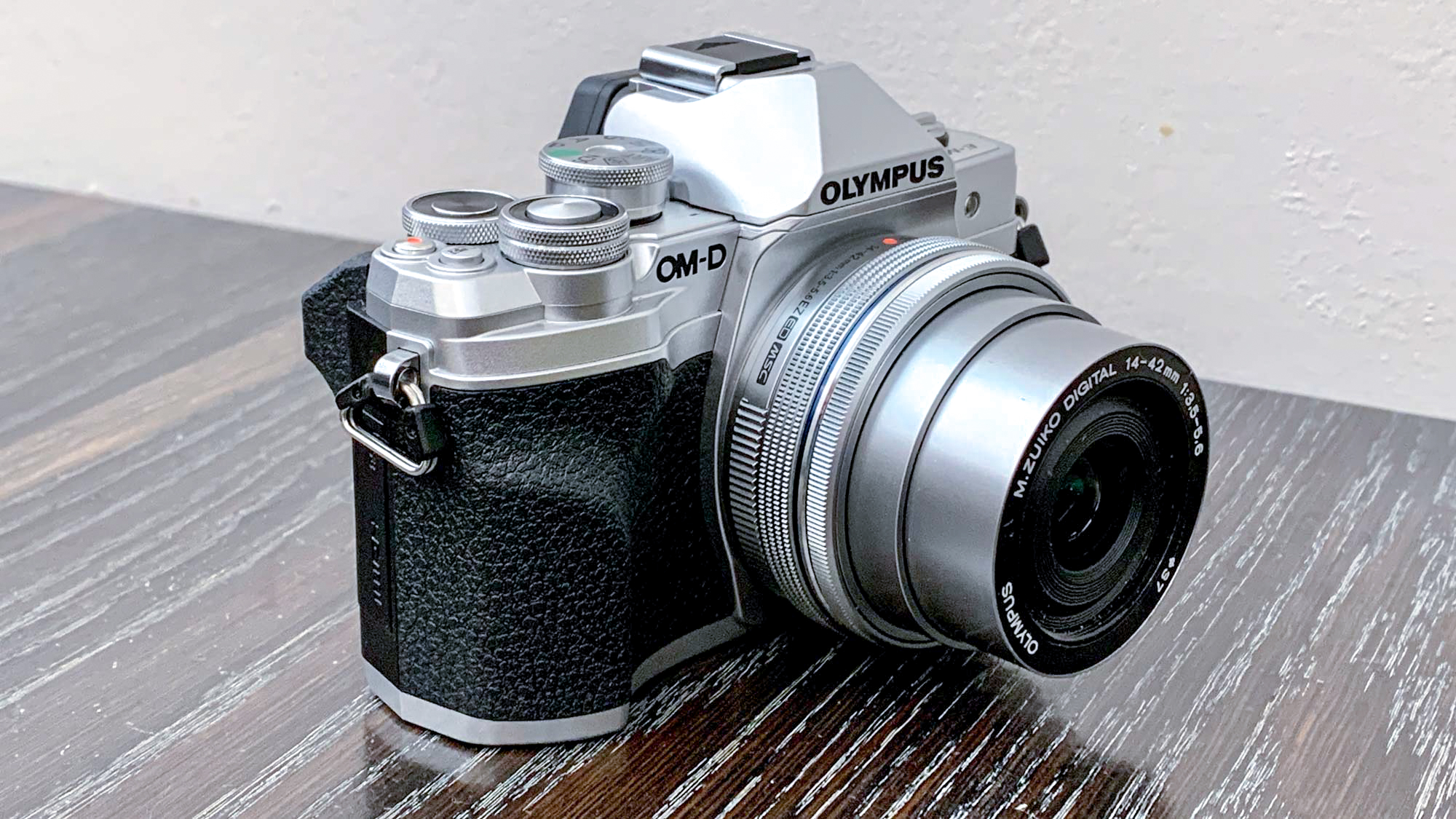
With excellent prototype quality, 5-axis in-trunk epitome stabilization, and a price well under $one,000, the Olympus OM-D EM-x Mark 4 provides a great entry betoken into the Olympus family. With its touch screen that rotates frontwards for selfie mode and 31 built-in prototype filters, the camera offers an piece of cake upgrade from cellphone photography. And its compact pattern makes the Mark Iv pretty piece of cake to conduct effectually.
Simply the Mark IV is non dumbed-downwards in any way. The bright OLED viewfinder offers a generous resolution of ii.36 meg dots, and the camera likewise has a bright, colorful 3-inch LCD touchscreen with about a million dots of resolution. The screen tilts up about 90 degrees and down 180 degrees to face you when shooting selfies. Video (4K/30 fps) is good, just held back by the lack of a microphone jack.
In-torso 5-axis image stabilization is the OM-D Eastward-M10 Iv's standout feature. It'due south not common in mirrorless cameras, and the capability is especially rare at this price.
Read our full Olympus OM-D EM-10 Mark IV review .
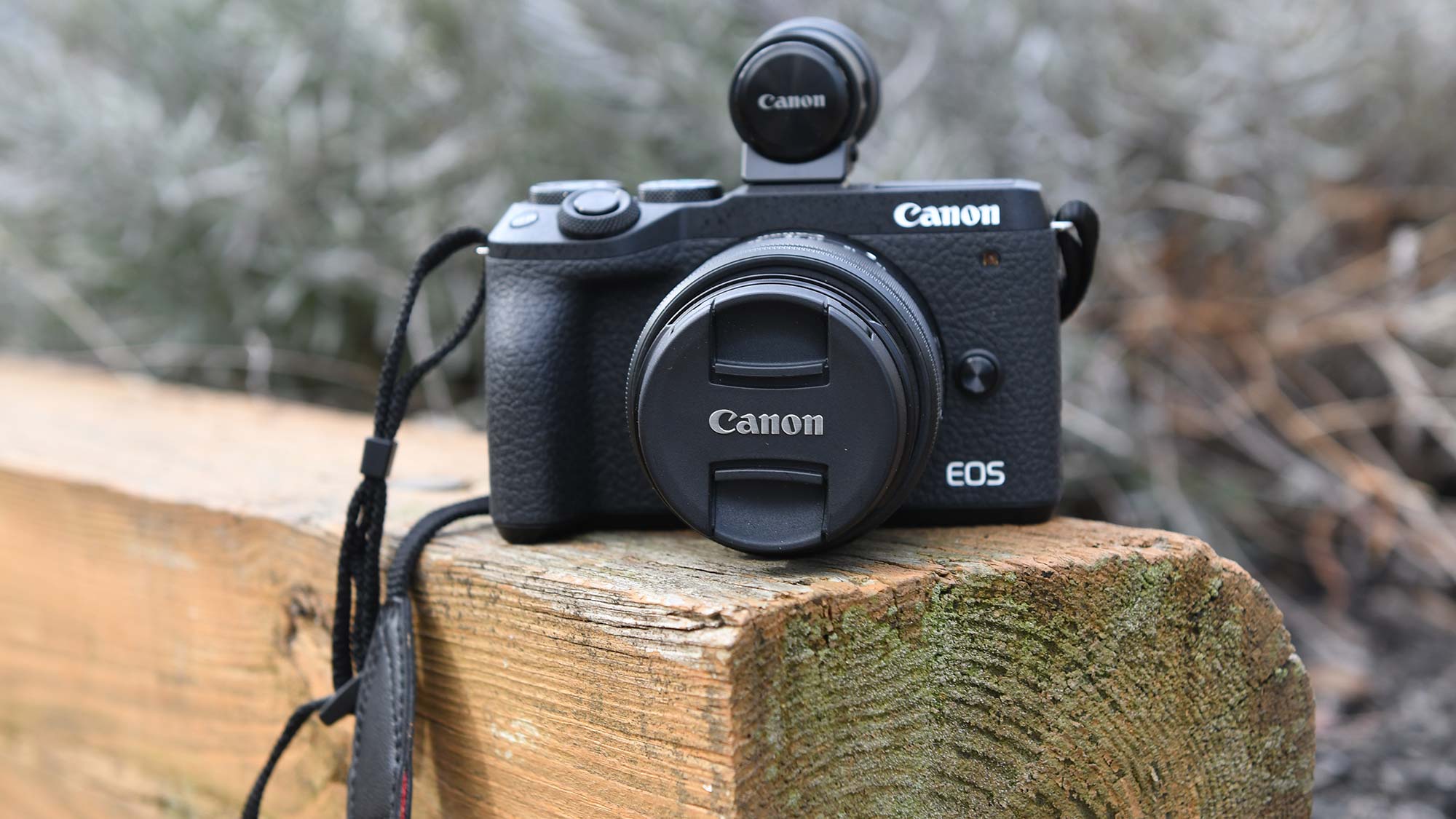
Canon'southward 2nd-generation EOS M6 Mark Two mirrorless camera has a lot to similar: It has a 32MP APS-C size sensor, the highest resolution in its class, and shares a number of features with the Catechism EOS 90D, its DSLR sibling, such as the image processor, 4K video and Dual Pixel CMOS AF. And, it comes in a much more compact packet, weighing in at fourteen.4 ounces with the battery.
However, Catechism sacrificed a congenital-in viewfinder, and while the M6 Mark II has an splendid 3-inch touchscreen, you'll desire to purchase this camera as part of a kit, or exist prepared to shell out an extra $200 for the optional electronic viewfinder that slides into the camera's hot shoe. If you tin can live with this compromise, though, you'll be rewarded with well-baked photos and fast shooting speeds.
Read our full Canon EOS M6 Marking Two review .
How to pick the all-time mirrorless camera for you
The criteria when shopping for a mirrorless camera are pretty much the same as when you're looking for any sort of camera.
First, what is your budget? While our picks of the best mirrorless cameras all fall nether $1,500, y'all tin can find models that are twice as expensive, and their features are very tempting.
Next, what is your experience level? If you're new to mirrorless cameras or photography in general, it'south worth getting a lower-priced model with more beginner-friendly features, such every bit in-photographic camera guides that explain various settings.
Last, consider what you want to do with the camera. If you're shooting sports or wildlife, you'll desire a photographic camera that tin have a lot of pictures rapidly, also as 1 with in-camera stabilization. And, while mirrorless cameras are known for their smaller size relative to DSLRs, you'll want one that's more meaty if you're planning to take information technology traveling.
How to choose a lens for your mirrorless camera
One of the nigh of import qualities that mirrorless and DSLRs share is that they accept interchangeable lenses, which tin dramatically meliorate image quality and bring your photography to a new level. Simply there are scores of lenses to choose from, which tin can exist confusing. To help you get better acquainted with this important photographic camera accessory, here's a quick rundown of types of interchangeable lenses that are available for your mirrorless camera:
Standard zoom lenses: This is the lens that nearly people who purchase an entry-level DSLR or mirrorless model as a kit use kickoff. Mirrorless kits more often than not come up with a fourteen-42mm lens. They typically include a small corporeality of zoom (3x), and are often inexpensive, just not the highest quality. However, in the past several years, the quality of these kit lenses has improved.
Prime lenses: You lot can save money by choosing a prime or not-zoom lens. They offer excellent quality, and are often much more than affordable. If you need to zoom, merely use your feet and walk closer to your subject!
Telephoto zoom lenses:If y'all shoot a lot of sports or other types of events, consider these powerful zooms, which can bring y'all closer to the action and provide features to capture images with shallow depth-of-field. They can be a bit heavy and bulky, merely most manufacturers have been inventing new lenses that are smaller and more compact, but are still high quality. The 70mm-200mm is a good example of this type of lens.
Wide-bending lenses: If y'all're traveling, this type of lens, such every bit a xvi-35mm zoom, can be very valuable, since it allows yous to capture different types of wide-bending shots. Want to shoot a grouping portrait? Gear up the zoom lens towards the 35mm end of the range, which will avoid distortion at the edges of the image. Or if you want to capture a broad, sweeping mural, use the lower end of the zoom, nearer to the 16mm end. However, these lenses tin can exist pricey.
Macro or Close-up lenses: If you're looking to capture close-upward shots of pocket-sized objects, you'll desire a expert quality macro lens, which come in a variety of focal lengths, such as 50mm and 100mm. Be sure to do your research and so y'all know that the lens yous want has macro capabilities.
Specialty lenses: Ane of the nearly notable specialty lenses in this category is the ultra-wide fisheye lens, which some photographers beloved for the exceptionally distorted betoken of view. Other types include tilt-shift and soft-focus lenses.
What are the different sensor sizes in mirrorless cameras?
You've probably seen references to full-frame, APS-C and Micro Four Thirds sensors — only how do they differ?
Well, full-frame is the biggest sensor you'll find on well-nigh mirrorless cameras. And nosotros say most, because Medium Format cameras are bigger still — simply likewise style out of most people's toll range, so nosotros'll skip them here.
Total-frame is actually an old term and refers to a sensor the size of that in a 35mm movie camera (roughly 36 ten 24mm). The Sony A7 range, Nikon Z5 and Catechism RP are all full-frame mirrorless cameras.
APS-C is the side by side size down (approx 22 x 15mm) and is found in most mirrorless cams including Sony's A6000 range, most of Fujifilm's 10 series and some Catechism and Nikon models. It has effectually 2.five times less surface area than full-frame.
Beneath that is Micro Four Thirds, a sensor size developed by Olympus and Panasonic specifically for mirrorless cameras; you'll only find information technology on models by those 2 manufacturers. This is almost a quarter the size of full-frame.
So, what does information technology thing? Well, in general, the bigger the sensor, the better the image quality. Larger sensors tin can gather more than calorie-free and will generally have less dissonance than smaller formats. But patently other factors too come into play here; this is a guide rather than a hard rule. Confronting that, a smaller sensor tin can allow for smaller cameras and — only as importantly — smaller lenses.
What are the differences between mirrorless cameras and DSLRs?
Mirrorless cameras have come a long way in the past decade, and now rival — and often beat — the best DSLR cameras in nearly regards.
Our comprehensive mirrorless vs DSLR guide gives you the total lowdown, but briefly, the central differences are:
- Size and weight
Mirrorless cameras don't have a mirror (the name gives that away) and as a result are ordinarily a lot smaller and lighter than DSLRs. - Viewfinders
DSLRs take an optical viewfinder, which shows yous the scene as it really is. Mirrorless cameras use an electronic viewfinder (EVF), which is a pocket-size screen showing yous a video feed of the scene. Also notation that some cheaper mirrorless cameras don't have whatsoever kind of viewfinder, leaving y'all reliant on the rear screen as on a smartphone. - Speed
Mirrorless cams are almost e'er faster, one time toll is taken into account, offering outburst speeds that exceed that found in many DSLRS. They can as well use an electronic shutter that tin shoot faster even so, though this normally reduces image quality. - Battery life
DSLRs have the edge here: by not needing to power an EVF or in some cases an LCD screen, they tin can usually go for a lot longer. - Choice
Very few DSLRs are being made now, with only Canon, Nikon and Pentax releasing new models (and even then, not that oft). Catechism and Nikon likewise make mirrorless cams, as practise Fujifilm, Sony, Panasonic, Olympus and others. - Lenses
Because DSLRs have been around for much longer, they have a richer range of lenses to choose from. Plus, second-hand lenses are readily bachelor — often for a low cost.
How we test mirrorless cameras
To make up one's mind which models make our list of the best mirrorless cameras, we first put each through a battery of tests, and evaluate them for such things as image and video quality, bombardment life, design, and usability. How fast can the camera shoot? Is its autofocus quick to lock on to subjects in the frame? When recording video, does information technology use the total sensor, and at what resolution can it record?
Nosotros too look at things such equally button placement, how easy information technology is to navigate in-camera menus, if its touchscreen tin fold outwards, and if you tin admission all the camera'south settings using the display.
Finally, we consider such things as what features the camera has, and what competitors are offering in cameras that toll around the same price.
Be sure to check out all of our camera picks:
Best cameras | All-time DSLR cameras | Best action cameras | Best waterproof cameras | Best betoken-and-shoot cameras | Best instant cameras | All-time cheap cameras | Best GoPro photographic camera | Best GoPro accessories | Best drones | Best 360 cameras | Best iPhone lenses | Best iPhone tripods |DSLR vs. mirrorless | Best Nikon accessories | Best Sony a6000 accessories
The best apps and software for editing, managing, and sharing your photos:
Best photo organizer apps | All-time photo storage sites | Best photo editing software | Best photo editing apps | All-time photo collage apps
Source: https://www.tomsguide.com/us/best-mirrorless-cameras,review-2221.html
Posted by: rachalbeenarile.blogspot.com


0 Response to "Best mirrorless cameras in 2022"
Post a Comment